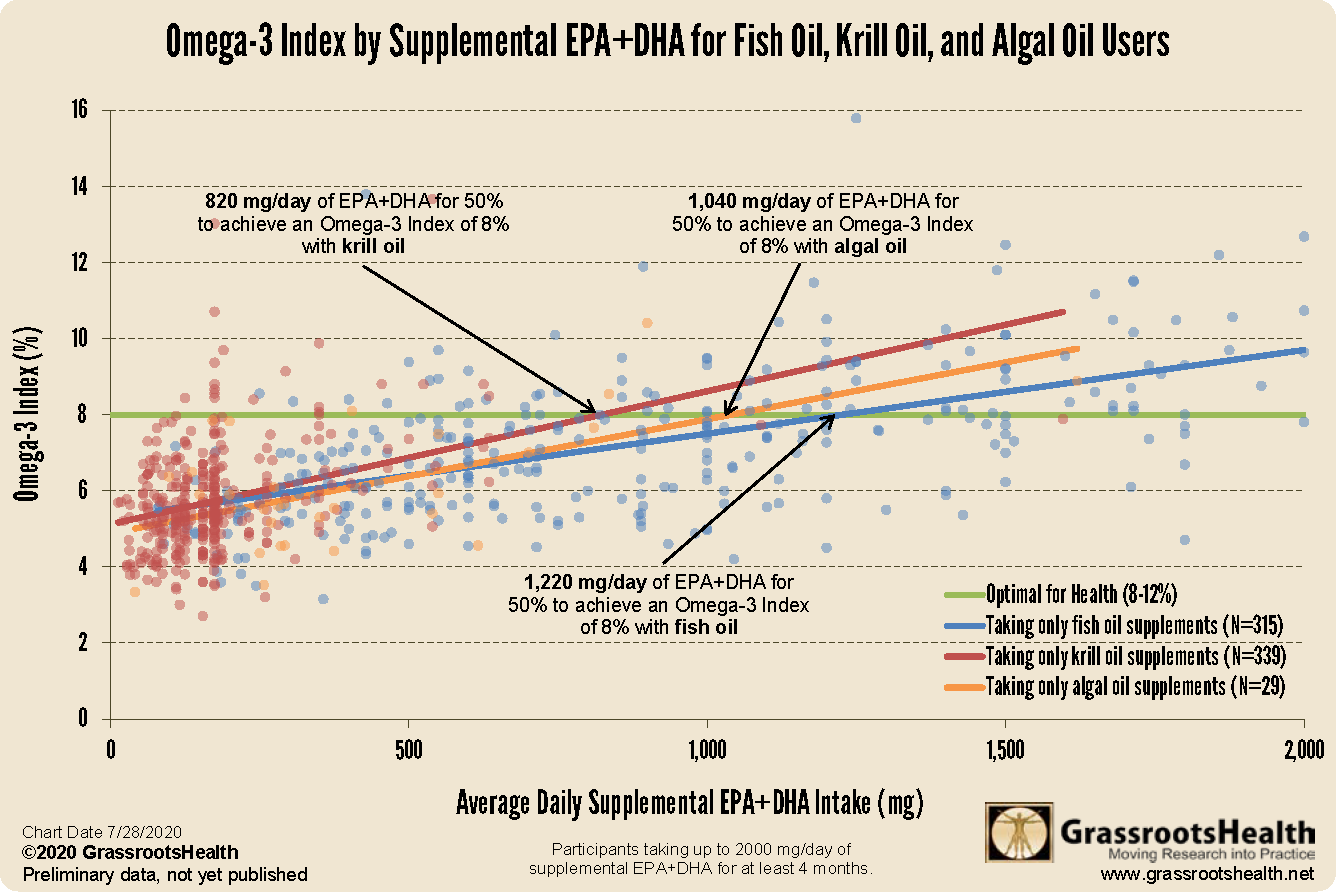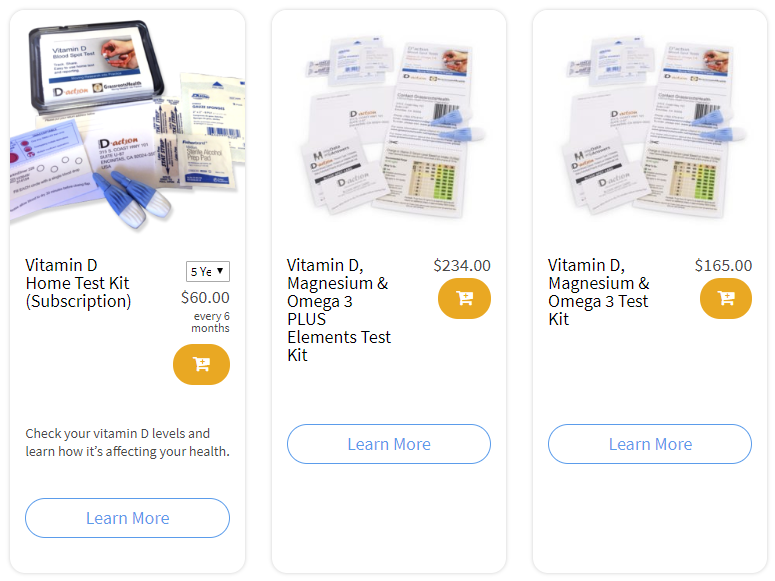Published on July 30, 2020
 In a previous blog, we compared the EPA+DHA intake requirement to achieve an Omega-3 Index of 8% or higher, the optimal level for health, for fish and krill oil supplements. Today we took a look how the preliminary dose response among algal oil users compares to users of fish oil or krill oil supplements.
In a previous blog, we compared the EPA+DHA intake requirement to achieve an Omega-3 Index of 8% or higher, the optimal level for health, for fish and krill oil supplements. Today we took a look how the preliminary dose response among algal oil users compares to users of fish oil or krill oil supplements.
Dose response for fish oil vs. krill oil vs. algal oil supplement users
The chart below shows the daily amount of EPA+DHA intake from supplements by Omega-3 Index for GrassrootsHealth participants taking only fish oil supplements, those taking only krill oil supplements, and those taking only algal oil supplements. We found that 1,220 mg/day of EPA+DHA from fish oil, 1,040 mg/day of EPA+DHA from algal oil, and 820 mg/day from krill oil was needed for 50% of the population to achieve an Omega-3 Index of 8%.
This analysis indicates that algal oil may be more effective than fish oil, but less effective than krill oil at raising Omega-3 Index levels since the steepness of the dose-response line for algal oil users was in between fish oil users and krill oil users. However, there were very few participants using only algal oil so more participants are needed to validate this preliminary finding.
Importance of Testing Your Omega-3 Index
It is important to point out that these intake amounts are averages and there is a large amount of variability in the omega-3 status for different people with the same intake amount. For example, our initial analysis showed that the range of response with 1000 mg of EPA+DHA per day was 5.7% to 10.2%. This large amount of variability is similar to what we have observed for vitamin D. Therefore, we recommend that individuals measure their Omega-3 Index and determine a personalized dose. Check out our Omega-3 calculator to help you determine the estimated dose needed for you to reach your desired Omega-3 Index.
Are You Getting Enough Vitamin D to Help Yourself?
We’re in a time of great crisis that could be greatly affected by making sure you and everyone you know has a serum level of at least 40 ng/ml. Help us help you.
Do you know what your vitamin D level is? Be sure to test today to find out, and take steps to keep it within a target of 40-60 ng/ml or 100-150 nmol/L! Give your immune system the nutrients it needs to support a healthy you and protect yourself from unnecessary diseases.
GrassrootsHealth Nutrient Research Institute is preparing to do a Community RCT with the use of our myData-myAnswers nutrient health system that over 15,000 people are already using for their health. We will demonstrate how one can use the Nutrient Research Model established by Dr. Robert Heaney to establish the effect of vitamin D serum levels of at least 40 ng/ml (100 nmol/L) on risk reduction with different ethnicities in the population. Please let us know if you’re interested in helping sponsor this project.
CLICK HERE for updates and new information about the project.
Through GrassrootsHealth Nutrient Research Institute, you can also test your essential elements magnesium, copper, zinc and selenium, toxins such as lead, mercury and cadmium, as well as your omega-3 levels, inflammation levels and thyroid stimulating hormone (TSH) level. Find out your levels today! Log on to the test selection page (click the link below) to get your tests and see for yourself if your levels can be improved.
Make sure you track your results before and after, about every 6 months!
Click Here to Access the Test Page
How can I track my nutrient intake and levels over time?
To help you track your supplement use and nutrient levels, GrassrootsHealth has created the Personal Health Nutrient Decision System called
For each specific supplement, you can track what days you take it, how much, and many other details. This will help you know your true supplemental intake and what patterns of use work for you to reach and maintain optimum nutrient levels. Check it out today!









